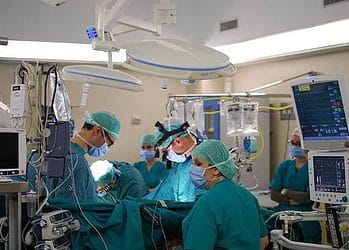
The universe is a vast and mysterious place, filled with objects that boggle the mind and defy our understanding of the laws of physics. One such object, a hypothetical construction known as a topological soliton, has recently been the focus of research by a team of physicists at Johns Hopkins University.
These scientists believe that the topological soliton, which looks like a black hole and behaves like a black hole in many ways, could actually be a new type of star.
A hypothetical mysterious new type of cosmic object
The team was inspired by the detection of gravitational waves in 2015, which provided the strongest evidence to date for the existence of black holes. While the mysterious object is currently a hypothetical mathematical construction, through their equations and simulations, the researchers were able to construct a topological soliton that looks and behaves like a black hole from a distance but behaves differently up close.
“We were very surprised,” said Pierre Heidmann, a Johns Hopkins physicist who led the study. “The object looks identical to a black hole, but there’s light coming out from its dark spot.”
One of the most striking differences between a topological soliton and a black hole is the behavior of light around the object. In a black hole, the gravitational force is so intense that nothing, not even light, can escape. However, the topological soliton is surrounded by weak light rays scattered in chaotic patterns, producing a lot of blur rather than a dark spot.
“Light is strongly bent, but instead of being absorbed as it would in a black hole, it scatters in funky motions until at one point it comes back to you in a chaotic manner,” Heidmann said. “You don’t see a dark spot. You see a lot of blur, which means light is orbiting like crazy around this weird object.”
This difference in behavior is significant because it suggests there could be other celestial bodies in space hiding from even the best telescopes on and around Earth. The fact that the topological soliton can be constructed using mathematical equations and simulations provides strong evidence for these objects’ existence.
“How would you tell when you don’t have a black hole? We don’t have a good way to test that,” said co-author and Johns Hopkins physicist Ibrahima Bah. “Studying hypothetical objects like topological solitons will help us figure that out as well.”
The topological soliton is not a prediction of a new object but rather a model of what new quantum gravity objects could look like compared to black holes. The research at Johns Hopkins is the start of a new research program aimed at proposing new types of ultracompact stars consisting of new kinds of matter from quantum gravity.
The use of string theory, which reconciles quantum mechanics and Einstein‘s theory of gravity, is a crucial part of this research. Scientists have previously created models of boson stars, gravastars, and other hypothetical objects that could exert similar gravitational effects with exotic forms of matter, but the use of string theory accounts for theories of the inner workings of the universe that other models do not. In fact, Bah and Heidmann constructed topological solitons using Einstein’s theory back in 2015.
The research is significant not only because it suggests the existence of new celestial bodies, but also because it raises important questions about how we detect and classify objects in space. Without a good way to test for the existence of black holes, we may have been overlooking other objects producing similar gravitational effects.
Their findings are set to publish in Physical Review D.




